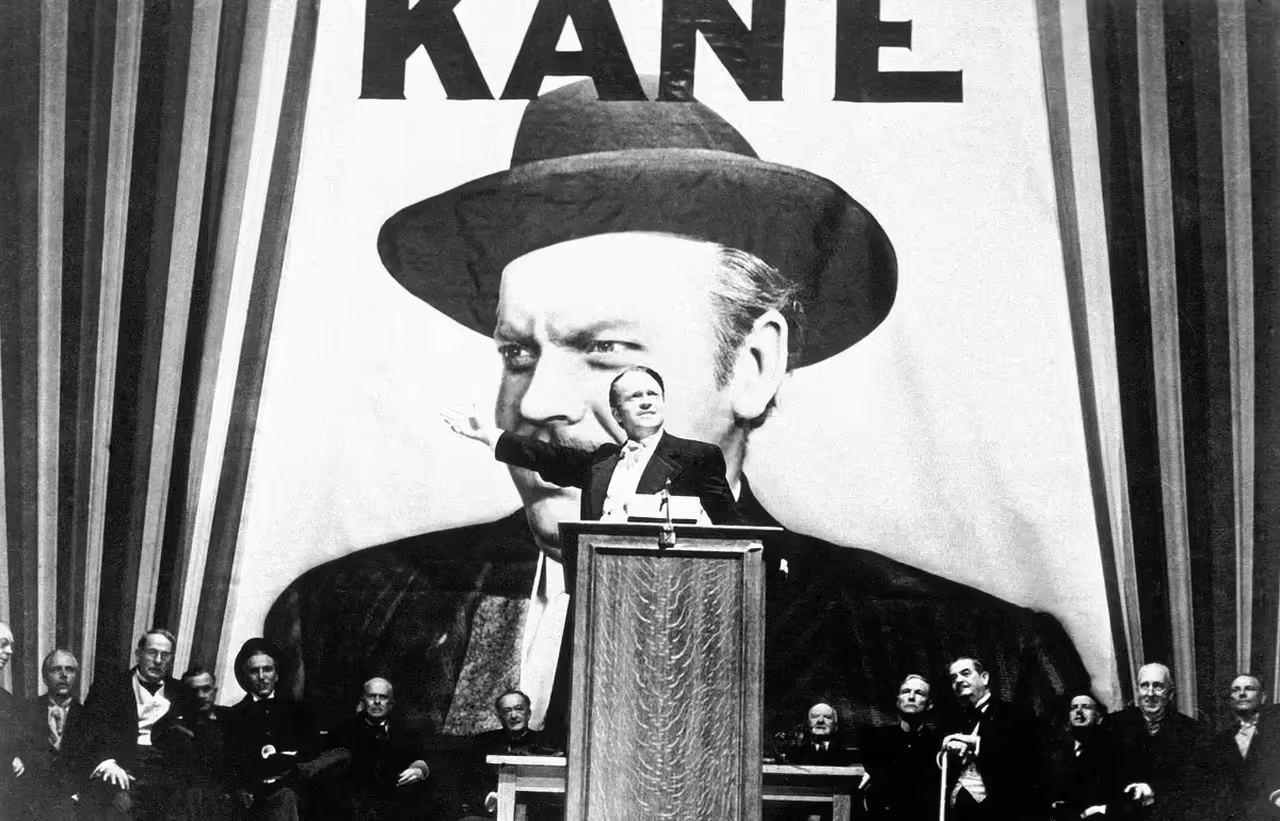
Film is one of the most powerful and transformative art forms ever created by humankind. Throughout history, there have been films that have left an indelible mark on culture, entertainment and society at large. However, among all the masterpieces that have captivated audiences and left their mark on the history of cinema, there is one film that stands above all others: the most influential film of all time.
Dedicating the title of “most influential film of all time” to a single work is a challenging and subjective task, as everyone has their own preferences and opinions about cinema. However, there is one film that has achieved considerable consensus and has left a lasting impact on generations of moviegoers and creators – “Citizen Kane.”
Directed by and starring Orson Welles, “Citizen Kane” was released in 1941 and revolutionized the way stories were told on the big screen. The film chronicles the life of newspaper magnate Charles Foster Kane, played by Welles, and uses a non-linear narrative structure and innovative filmmaking techniques to present the protagonist’s life through the memories and perspectives of those who knew him.
One of the reasons “Citizen Kane” is considered so influential is its revolutionary use of cinematography. Orson Welles and his cinematographer, Gregg Toland, experimented with unusual camera angles, creative lighting and depth of field to create stunning images that are still studied and admired in film schools today. The way they used shots and camera movements to communicate the story set new standards for the industry and opened the door to new artistic possibilities.
In addition to its technical innovation, “Citizen Kane” introduced bold thematic and narrative ideas that resonated deeply with audiences. It explored themes of power, ambition, love, loneliness and loss, presenting a complex vision of a powerful but tormented man. These deep and universal themes have become fundamental elements of many subsequent films, influencing the way filmmakers tell their stories and connect with the viewer.
Another aspect of the film that has left a lasting mark on cinema is its non-linear narrative structure. Through a series of flashbacks and testimonies, the main character’s life is unraveled, revealing his complexities and contradictions. This narrative technique has been used in countless subsequent films, inspiring directors to explore different ways of presenting their stories and characters.
The legacy of “Citizen Kane” also extends to the film industry itself. Despite its critical acclaim and cultural influence, the film was initially not a major box office success due to resistance from the established powers of the film industry. However, over time, its reputation and recognition grew to make it one of the most iconic films of all time.
Over the years, “Citizen Kane” has been the subject of analysis and study by filmmakers, scholars and critics, and has been considered a cinematic masterpiece for its impact and contributions to filmmaking. Its legacy continues to inspire generations of filmmakers to challenge the boundaries of cinematic art and to tell stories that resonate in the heart of the viewer.
How a revolutionary film transformed cinematic storytelling
In the vast history of cinema, there have been defining moments that have transformed cinematic storytelling and elevated the art of filmmaking to new heights. One of these pivotal moments took place in 1941, when Orson Welles introduced the world to his masterpiece, “Citizen Kane.” This iconic film has become a revolutionary milestone that has left an indelible mark on the way stories are told on the big screen.
“Citizen Kane” was not just another film in Hollywood’s golden age; it was a bold experimentation that challenged the established conventions of cinematic storytelling at the time. The film centers on the life of the enigmatic newspaper tycoon, Charles Foster Kane, whose story unfolds through the recollections and testimonies of those who knew him. This non-linear narrative structure was an innovative and unconventional approach at the time, and is one of the main reasons why “Citizen Kane” is so influential.
Another revolutionary aspect of “Citizen Kane” was its focus on the protagonist, Charles Foster Kane. Prior to this film, most Hollywood films tended to feature one-dimensional, easily identifiable main characters as either heroes or villains. However, Welles broke this mold by creating a complex and ambiguous protagonist, showing the different facets of his personality and the motivations behind his actions. This deeply human characterization set a precedent for future filmmakers and proved that complex characters can connect with audiences in a more meaningful way.
“Citizen Kane” also challenged the status quo in terms of how to tell a story. Welles and his team used parallel montages and ellipses to jump around in time and space, resulting in a more fluid and dynamic narrative. This approach became a commonly used technique in later cinema, allowing directors to tell stories in a more concise and emotionally powerful way.
The influence of “Citizen Kane” on cinematic storytelling is not just limited to classic cinema. Its legacy has spanned the decades and inspired generations of filmmakers to explore new ways of storytelling. Many of the innovative techniques and approaches presented in this film have become standard elements in contemporary film language.
Cultural Icon: The impact of the most influential film on society and the arts
“Citizen Kane” is more than a film; it is a cultural icon that has left an indelible impact on society and art since its release in 1941. Directed by Orson Welles, this masterpiece has transcended time and shaped the way cinema is perceived and made, leaving an enduring mark on the history of popular culture.
In its time, “Citizen Kane” was a film ahead of its time, challenging the established narrative and visual conventions of Hollywood’s golden age cinema. The film is still considered one of the greatest films of all time due to its bold approach to non-linear narrative structure, which presented the story of Charles Foster Kane through a series of flashbacks and testimonials. This innovative technique broke new ground in the way stories were told on film, influencing generations of filmmakers who found inspiration in Welles’ boldness and originality.
The cultural impact of “Citizen Kane” is also reflected in its profound characterization of the protagonist, Charles Foster Kane. The film presents a complex and ambiguous vision of the character, which broke the mold of the one-dimensional heroes and villains typical of cinema at the time. This human and multifaceted portrayal of the characters inspired the filmmakers to explore the deeper psychology and motivations of their characters, leading to richer story development and a greater emotional connection with the audience.
In addition to its impact on cinematic storytelling, “Citizen Kane” also influenced the art of directing and cinematography. Orson Welles and his cinematographer, Gregg Toland, experimented with unusual camera angles, creative lighting and depth of field to create a visually stunning and stylized experience. Many of these techniques have become mainstays of the modern film language and have been emulated in countless subsequent films.
The legacy of “Citizen Kane” extends beyond cinema, impacting popular culture and society at large. The film raises universal and timeless themes, such as power, ambition, love and loneliness, that resonate with audiences of all ages. Its critical portrayal of wealth and unbridled ambition remains relevant even today, where the subject of greed and corruption continues to be the subject of reflection and discussion.
The title of “the most influential film of all time” bestowed upon “Citizen Kane” is not simply empty recognition; it is a testament to the cultural and artistic legacy it has left in the world of cinema and beyond. Its influence is still evident in contemporary films, and its imprint can be felt in the works of filmmakers of various generations who have found in “Citizen Kane” a constant source of inspiration.
Behind the Magic: Analyzing the creative process of the most influential film
“Citizen Kane” is a film that has left a lasting impact on the world of cinema and has been hailed as one of the most influential films of all time. But how was it possible to create this masterpiece and what creative elements contributed to its greatness? Let’s delve into the creative process behind the magic of “Citizen Kane”.
The genesis of the idea: The story of “Citizen Kane” was inspired by the life of American newspaper magnate William Randolph Hearst. The young Orson Welles, along with screenwriter Herman J. Mankiewicz, worked on a script that would become the foundation of the film. The innovative approach of telling the life of a powerful man from different perspectives was a revolutionary idea at the time and laid the groundwork for the film’s non-linear narrative structure.
Orson Welles’ visionary direction: As a director, Welles had a unique and bold vision for “Citizen Kane.” Despite his youth and relative inexperience in filmmaking, he risked experimenting with unconventional film techniques and using depth of field to create stunning visual compositions. Welles also worked closely with his cinematographer, Gregg Toland, to achieve a striking visual aesthetic that complemented the narrative.
Editing and non-linear narrative: One of the most distinctive aspects of “Citizen Kane” was its non-linear narrative approach, which presented the protagonist’s life through a series of flashbacks and testimonials. Carefully crafted editing and editing allowed this complex structure to work seamlessly, taking the audience on an intriguing and emotional journey through the life of Charles Foster Kane.
Orson Welles’ performance: In addition to his direction, Orson Welles also starred in the film as Charles Foster Kane. His charismatic and emotional performance brought the character to life and gave him a magnetic screen presence. Welles’ performance has become a milestone in film history and has inspired future actors to fully immerse themselves in their characters.
Bernard Herrmann’s music: The score for “Citizen Kane,” created by Bernard Herrmann, was an essential component in establishing the tone and atmosphere of the film. Herrmann’s music perfectly complemented the scenes and brought additional emotional depth to the narrative.
Reception and legacy: Although “Citizen Kane” was not an immediate commercial success, it was widely acclaimed by critics and eventually earned the status of a cinematic masterpiece. Over the years, it has been recognized as one of the most influential films in the history of cinematic art and has left an enduring mark on the way films are made and perceived.







